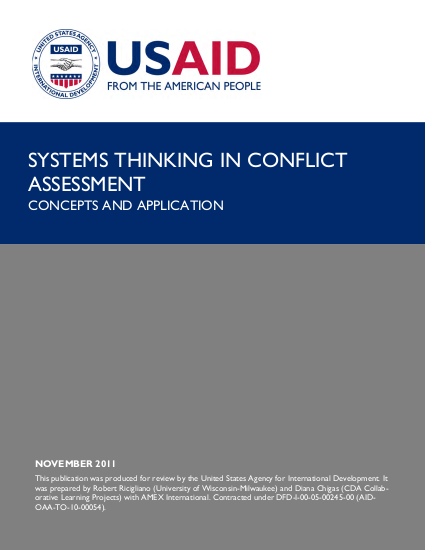
This paper was commissioned as part of a project undertaken in 2011 by USAID’s Office of Conflict Management and Mitigation (DCHA/CMM) and its implementing partner AMEX International to improve USAID’s capacity to understand and apply systems thinking to the assessment of violent conflict for purposes of development planning and program design.
The project convened an Advisory Group of systems thinking experts and conducted two Focus Groups and two training module pilots with USAID personnel and participants from the Department of State and Department of Defense on how best to incorporate systems thinking into conflict assessment. This concept paper is based on the results of those discussions, as well as desk research and the experience of the authors and Advisory Group members on uses of systems thinking. It provides a rationale for the use of systems thinking in USAID’s conflict assessments and development planning processes generally, and it describes basic concepts of systems mapping and analysis as they might apply to conflict analysis by a development agency.
Systems thinking is a way of understanding reality that emphasizes the relationships among a system’s parts rather than simply the parts themselves. For the purposes of this paper, systems thinking can be described as the “science of wholeness.” It is founded on the premise that, as Aristotle (Metaphysics 10f-1045a) once observed, the “whole is more than the sum of its parts.” Following this view, systems thinking holds that the ability to see the whole of a phenomenon in its broader context will provide new and different insights than can be gained by looking at each of its component parts individually.